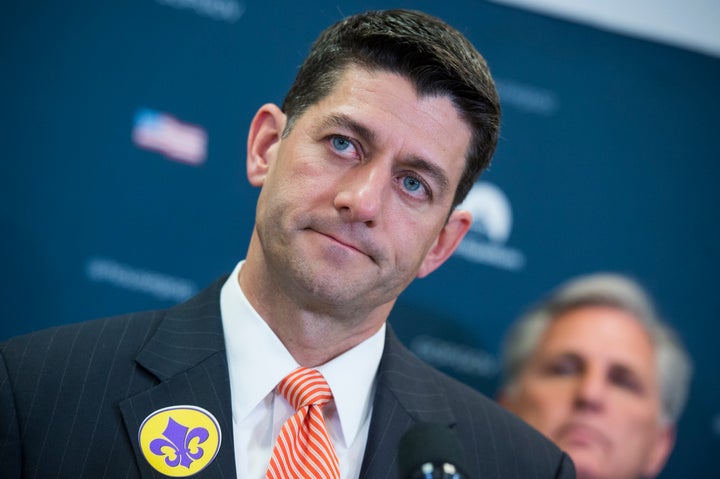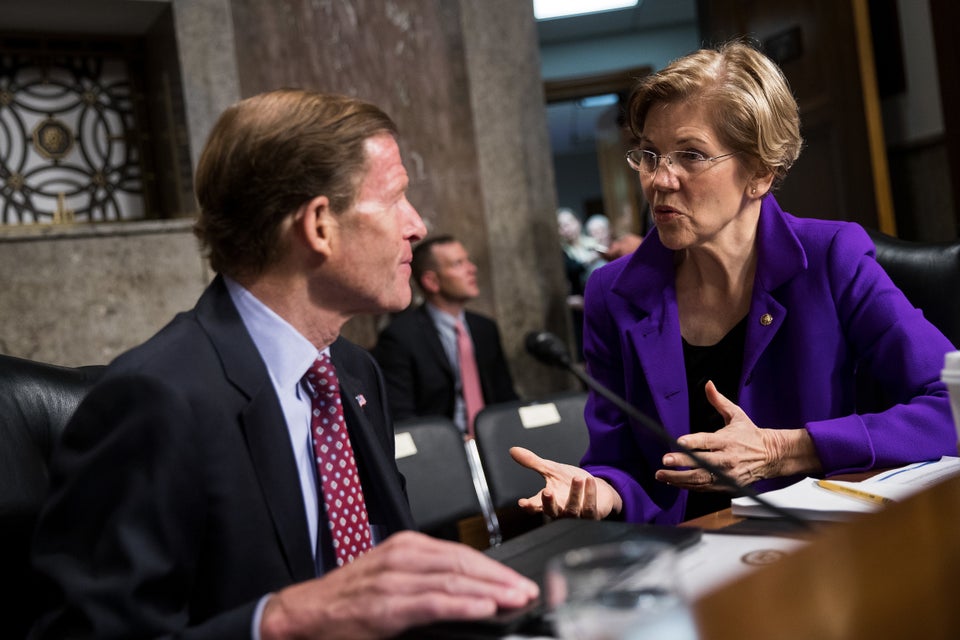WASHINGTON ― It’s been 785 days since House Republicans agreed to a budget they believed in. And if the current disagreement over spending levels continues, Republicans may walk away this year without a budget, a single standalone appropriations bill signed into law or a vehicle for their precious tax reform.
House Speaker Paul Ryan (R-Wis.) has long said Congress should follow “regular order,” with lawmakers setting spending levels each year in a budget and following those blueprints by passing individual appropriations bills.
But the process got off to a delayed start this year when President Donald Trump didn’t release his budget until late spring. Appropriators didn’t know what numbers they should use for their fiscal 2018 spending bills, and lawmakers used up floor time for their Obamacare repeal. (Technically the health care reconciliation bill was a budget, but Republicans simply used it as a shell bill that didn’t actually lay out spending priorities.)
All the budget delays are supposed to end shortly, with the Budget Committee supposedly marking up a document next week (although an official date hasn’t been set). The only problem: Republicans don’t currently have the votes to advance a budget out of the House, even if the panel moves ahead with their blueprint in the coming days.

At the center of the debate is how much GOP lawmakers should put forward for military spending. For this upcoming fiscal year, defense hawks want $640 billion. Some more fiscally conservative Republicans want to go with $603 billion, which is Trump’s number. And a host of other lawmakers think everyone should just split the difference.
Republicans will likely come up with something in the middle ― say, $621 billion ― but it’s unclear if there are enough votes for any number. The Budget Control Act, signed into law in 2011, set the fiscal 2018 defense budget at $549 billion. And even though Republicans are looking to spend well above that cap, they are also looking to come in below the nondefense number.
The BCA set nondefense spending for 2018 at $516 billion, and Republicans appear apt to put forward a budget at $511 billion. Doing so would likely require significant cuts to safety net programs.
Ryan has rued the growth of spending in programs like food stamps and Medicaid, which largely dodged the ax when Congress and President Bill Clinton reformed welfare in 1996 ― a process that left the Aid to Families with Dependent Children program a shell of its former self.
“The welfare-reform mindset hasn’t been applied with equal vigor across the spectrum of anti-poverty programs,” Ryan said in 2012. “In most of these programs, especially in recent years, we’re still trying to measure compassion by how much government spends, not by how many people we help escape from poverty.”
It’s all very fun for House Republicans to push big numbers, with major increases to defense spending and drastic cuts to other domestic programs. But appropriators in the Senate aren’t going to abide by those levels in their spending bills, meaning appropriations measures will just flounder. At some point, if Republicans want a defense number greater than $549 billion for next year, they will have to reach an agreement with Senate Democrats, and that likely means adding money to those nondefense programs too.
Conservatives in the House Freedom Caucus had been kicking around one idea for those increases to defense and nondefense: give everyone the numbers they want for fiscal 2018 in the budget, but couple them with huge savings commands in the reconciliation instructions for tax reform to, say, the tune of $400 billion.
Most of that money, conservatives say, would have to come from the Supplemental Nutrition Assistance Program, which is commonly known as food stamps and is the third-costliest safety net program in the United States. But there isn’t consensus within the Freedom Caucus on that strategy, and House GOP leadership is uncomfortable jeopardizing tax reform by asking for massive food stamp cuts. (The attack ads, claiming Republicans cut food stamps so they could pay for tax cuts for millionaires, write themselves.)
Trump’s budget proposed cutting SNAP by more than 25 percent, saving $193 billion over 10 years mainly by requiring states to pay a portion of benefits while simultaneously giving them more leeway to kick people off benefits. House Republicans likewise favor delegating to states. They also lament the increase in the number of beneficiaries who are unemployed adults without children or disabilities. Such people make up only about 10 percent of SNAP recipients, according to the most recent data, and most states are already imposing a three-month time limit on their benefits due to falling unemployment rates. In other words, it won’t be easy for Republicans to cut SNAP spending without reducing benefits for households with children, disabled people or senior citizens.
But again, the Freedom Caucus doesn’t have consensus for a plan holding up the budget. Some of the group’s members want the highest defense number. (Freedom Caucus member Rep. Trent Franks (R-Ariz.) told HuffPost earlier this week that $640 billion is what’s needed. “I don’t know what kind of a price you put on national security?” he said.) And other members feel uncomfortable giving Congress large spending increases this year for the promise of future cuts. (Freedom Caucus member Rep. Scott Perry (R-Pa.) compared the plan to getting a cheeseburger today and promising to pay for it Tuesday. “We all know it never happens,” he said.)
“I don’t know what kind of a price you put on national security?”
- Rep. Trent Franks (R-Ariz.)
Conservatives may not entirely be on the same page here, but most know they don’t want to agree to GOP leadership’s offer: a $621 billion defense number, a $511 nondefense number, and instructions for committees to find $150 billion in savings over 10 years. The Republican Study Committee ― a much larger but less conservative group ― tried to come to an official position earlier this week that would have supported those numbers. The resolution, offered by committee Chairman Mark Walker (R-N.C.), didn’t have the votes.
Which is to say leadership is still negotiating with conservatives. Budgets are normally just glorified press releases, as they don’t carry the force of law. But because Republicans plan to use this budget as a reconciliation bill for tax reform, complete with instructions from committees to find savings over 10 years, this budget does have a little more power. Still, even if leaders did commit to the $400 billion in future savings ― and it’s almost guaranteed they won’t ― it isn’t a sure thing that those cuts will ever come to fruition, hence the price of those cheeseburgers tomorrow.
Bob Greenstein, director of the Center on Budget and Policy Priorities, one of the most influential liberal think tanks in Washington, said the threat to the safety net is real, despite the many obstacles to a Republican budget. The GOP’s tax cut agenda could be a big motivator for slashing food stamps.
“Those savings in the entitlements could conceivably be used to offset the cost of the tax cuts,” Greeinstein said. “I would not rule out the potential for such a reconciliation bill to move.”
If Ryan ― a former Budget Committee chairman himself ― can’t shepherd through a budget this year, it will be the second time he’s been unable to get the document through his chamber. And he will be relying upon the idea that once lawmakers put together a tax reform package, he might be able to get his chamber to advance another shell budget that simply allows Republicans to move forward with reconciliation.
Short of finding some agreement, it’ll be the second year in a row that the budget and appropriations process completely broke down. And if Republicans want all that extra defense money, they’d have to strike a deal with Senate Democrats on raising the spending caps, which means even more money spent on non-defense and an even larger deficit.
And that is the grand irony of congressional fiscal conservatism: When there aren’t enough votes to actually enact your vision, you end up just handing spending decisions to the Democrats.
